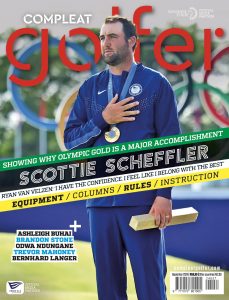I dipped in and out of the wall-to-wall Olympic coverage on SuperSport in August.
My daughter was involved with the Eventing competition at Versailles, so I watched the cross-country section and marvelled at the backdrop and the creativity of the camera angles.
I watched our men’s and women’s hockey teams more in hope than expectation, and I wondered out loud to anyone who was listening, how many South African viewers were paying any attention at all to the extensive coverage of fencing, shooting and handball.
It took the arrival of the men’s golf competition to glue me to my seat and the reason was not just the presence of so many global stars. It was the set-up of the golf course at Le Golf National that had me salivating. Narrow fairways, penal rough, funny-shaped greens and an 18th hole apparently designed by the Marquis de Sade.
If you watch much golf on television these days you get used to players pasting the ball 300m straight down the fairway, then hitting one of the four wedges in their bags to a couple of feet for birdie.
Le Golf National made some of the world’s best think outside the box. Which is not to say that the course was unplayable: far from it, as eight- and nine-under-par rounds threw people into contention from apparently hopeless situations. Yet the chance that a good player was going to make a big number kept me on the edge of my seat.
Personally, I think that Le Golf National was set up exactly the way all Major championships should be. If governing bodies are trying to identify the best player, make it hard, not easy. That way the chances of a nobody winning the trophy are severely diminished.
The final leaderboard at the Olympics was, of course, shorn of many superstars due to the complex structure of the field. A host of American and European contenders were absent, while the likes of Joel Girrbach, the Swiss player ranked 373rd in the world, got to peg it up.
Be that as it may, the Olympic golf competition successfully identified the best player in the world, Scottie Scheffler. His last-day 62, together with a back-nine meltdown from both Jon Rahm and defending champion Xander Schauffele, was enough to take the gold medal. Given that Scheffler had won six other titles in 2024, including The Masters, he deserves all the credit due.
Interestingly enough, the Olympic tennis competition, which also has odd entry criteria, identified not just the best men’s player, but probably the greatest of all time, Novak Djokovic. The Serb beat Spanish wunderkind Carlos Alcaraz in the final and was plainly delighted to add Olympic gold to his 24 Grand Slams.
Both tennis and golf returned to the Olympics after a long hiatus; tennis in 1988, 64 years after being dropped, and golf in 2016, fully 112 years after it had last been part of the programme. It took half a dozen goes for professional tennis stars to accept the Olympics as a proper tournament, but I think golf has got there much quicker.
Now all we need is someone sensible to change it from strokeplay to matchplay. On a course like Le Golf National. I can’t wait.
– This column first appeared in the September 2024 issue of Compleat Golfer magazine.

Photo: Kevin C Cox/Getty Images
The post Andy Capostagno Column: Best player wins gold appeared first on Compleat Golfer.
Article Link: Andy Capostagno Column: Best player wins gold
